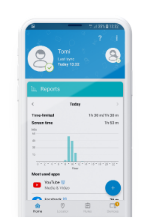ANIMALIA – Influencers
Do influencers always have good influence on children? Find out in the new episode of "Animalia", educational, interactive, animated series about child safety on the internet.
Fake news has been around as long as news itself. From more light-hearted examples, such as the April Fool’s Day “spaghetti tree” hoax from 1957, to more serious examples of disinformation, fabricated stories, and doctored media, fake news cannot be ignored. It’s also not going anywhere, which is why parents have responsibility to understand fake news and help their own children spot it online.
The internet is a wonderful resource: we now have a wealth of information at our fingertips with the potential to bring the world together. However, as many recent events around the globe have shown, the internet can also be used to sow misinformation and divide people. Individuals, groups, and even nations are suspected of spreading lies and propaganda to weaken their opponents or, as we’ve seen in 2020, undermine popular elections.
Given the sheer volume of information available in our feeds, many people struggle to differentiate between real news, from verified sources, and severely biased, propagandized, or outright fake news. For example, fake news has been linked to major political developments in the US and the UK. More recently, the increase in the number of parents refusing to vaccinate their children against contagious diseases has been linked to social media groups spreading unsubstantiated and false information about the safety of vaccines.
Social media websites have been criticized for doing too little too late in combating fake news. There are growing calls for social networks to be held responsible for content that appears on their websites. And while Facebook, Twitter, and other social media giants are taking steps to combat misinformation, the logistics, legal technicalities, and censorship considerations remain significant hurdles.
As a result, people need to be able to determine right from wrong themselves. In this environment, it’s difficult enough for grown-ups to identify fake news. How are children supposed to do it? As we’ve seen, teens are especially vulnerable, as they are more likely to rely on social media for news.
Of course, it’s not just news. There are people online looking to deceive others for a number of reasons. While fake news associated with political campaigns is high profile, what about commercial motives? Is a seemingly neutral article actually trying to persuade you or your child to buy a particular product, watch a TV show, or follow an influencer?
Children are easily impressed. Their desire to belong to a crowd—to “fit in”—can lead them to accept things that a grown-up might understand to be objectively wrong.
If a child hears someone telling a story in the street, for example, would they automatically believe it? We hope not. But imagine being a kid using social media platforms where they’re hearing and seeing stories, takes, opinions, and headlines every single time they log on.
If media literacy and critical thinking were important before, they are essential these days due to the sheer proliferation of news sources and information. Quantity might have increased, but quality, veracity, and integrity is another matter.
Which brings us to the golden rule of internet news: just because something appears on the internet, it doesn’t make it true.
How can we help children distinguish between real, unbiased news, paid content, and fake news? It starts with asking a few simple questions before clicking, commenting, or sharing:
Identifying fake news is not an easy task and even experts struggle sometimes when trying to distinguish between good and bad information. However, learning to ask the right questions is crucial and will only become more important in the future. In the same way we ask our children to stop, look, and listen before crossing the street, or to think before they speak or act, we ought to encourage them to stop and think before they begin engaging with news and information online.


With ESET Parental Control for Android
Try free for 30 daysDo influencers always have good influence on children? Find out in the new episode of "Animalia", educational, interactive, animated series about child safety on the internet.
Posting mean comments on social media is not cool. Does your child know that? Enjoy "Animalia", educational, interactive, animated series about child safety on the internet.
Monique, Elias' classmate, is targeted by an anonymous online hater. What can Elias and Linda do to help her?